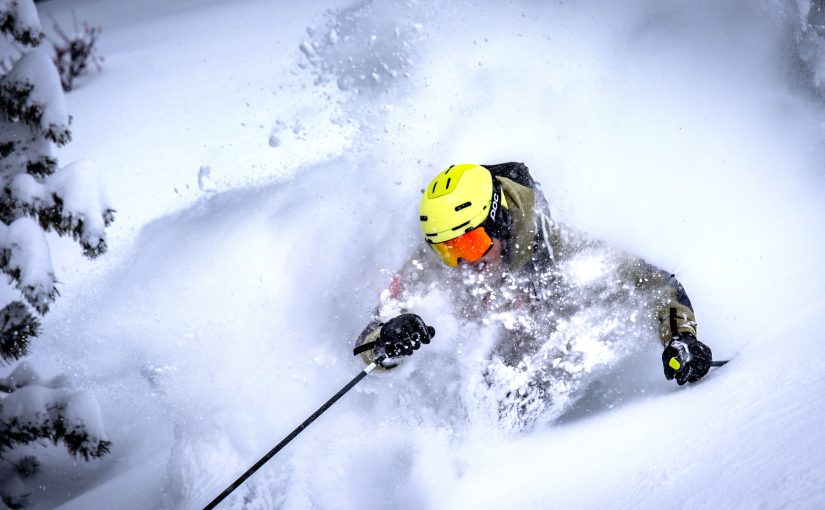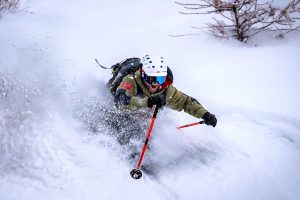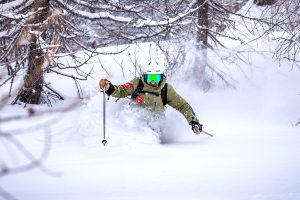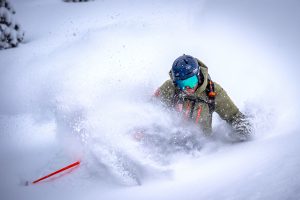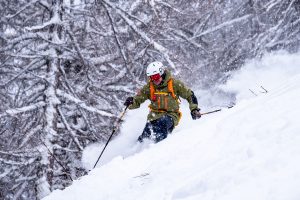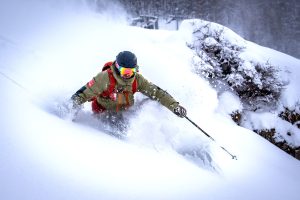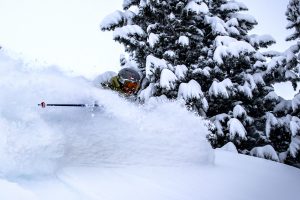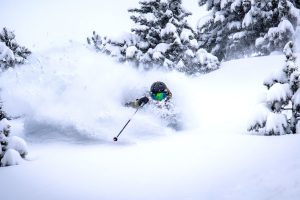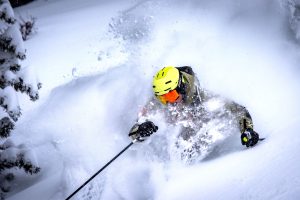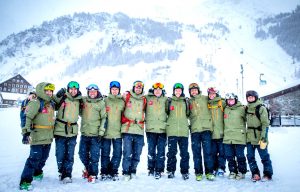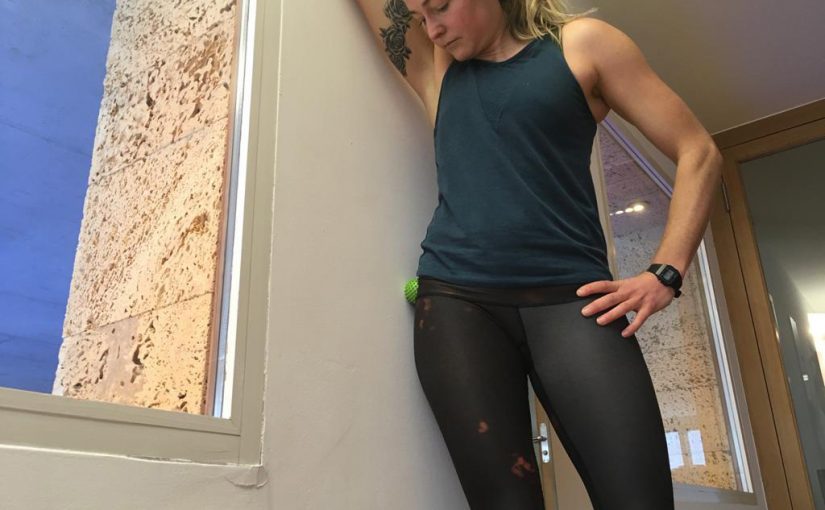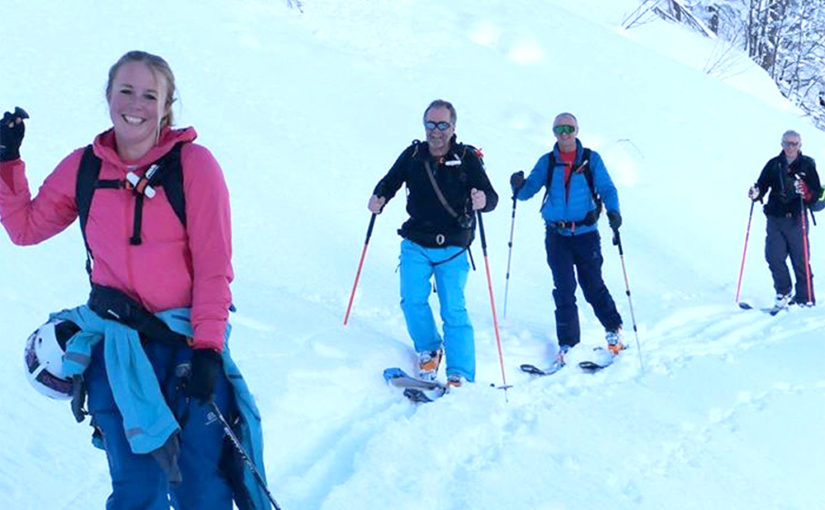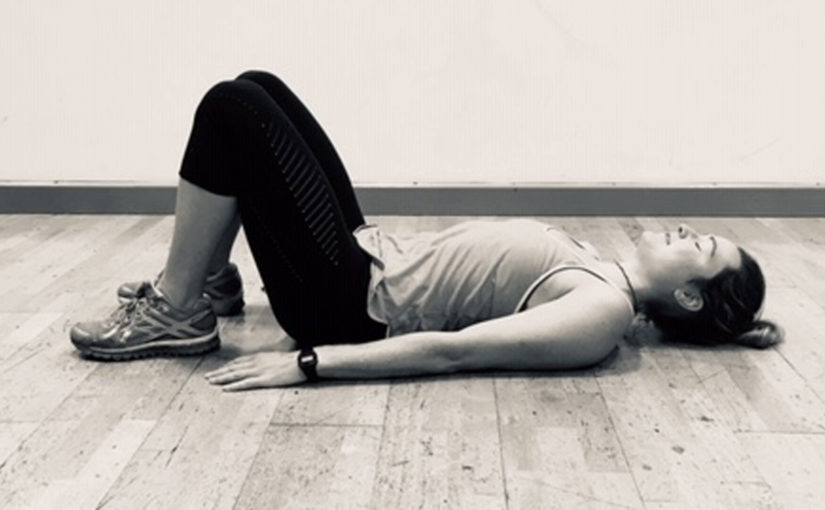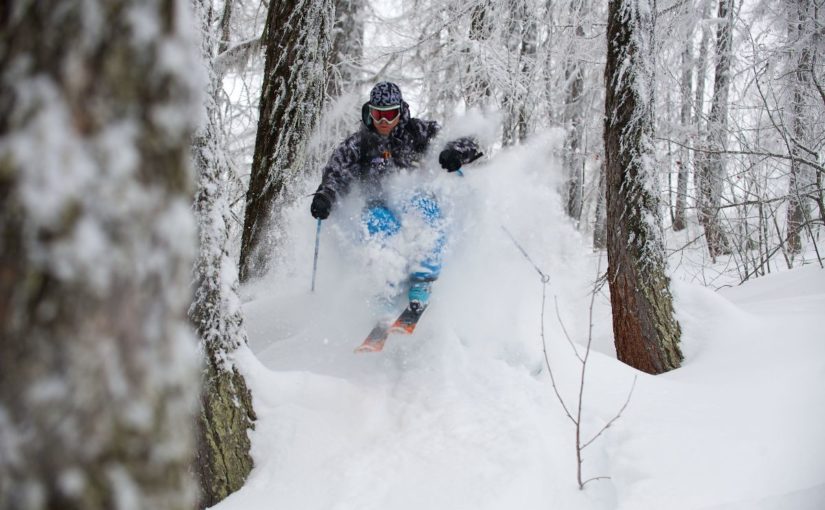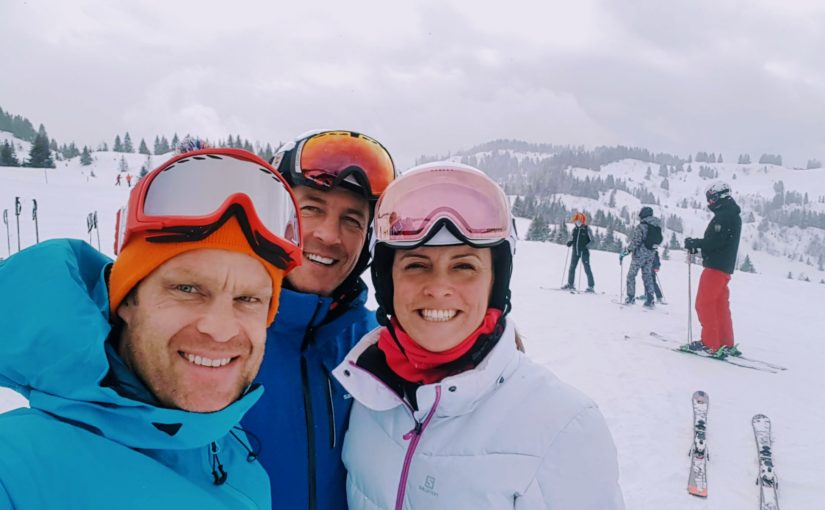Have a look at some of the great images we got on Val d’Isere opening day 2nd Dec 2023.
Photo Credits – Tony Wilkinson Photography
Tag: the development centre
Spring Skiing Can Be Hard To Beat
Are You Fit & Ready For The Slopes To Open?
Whether you’re lucky enough to be touring in the mountains or making the most of daily outdoor exercise in the UK with some running, we’re making the most of the lockdown so we’re fit and ready for the slopes to open!
We’ve teamed up with the wonderful Jo Pollard, a Physiotherapist based in Val d’Isere and Tignes who specialises in ski and snowboard injuries and injury prevention. Jo is currently busy working with the New Zealand women’s World Cup racing team, so we’re thrilled that she’s put together some top tips for activation before you head out running or touring.
If you’d like any more info or some personalised advise, get in touch with Jo at https://jopollardphysio.com/
With the lockdown continuing in many places, a lot more people have taken to running recently. And those of us who are lucky to live in the mountains are hitting the touring hard.
After hearing some grumbles from clients/friends, I have put together a few pre mountain or pre-running activation tips.
There are of course many exercises and things you could/should/would do, but here are 5 exercises that should take no longer than 5 minutes (unless you’re enjoying them and want to do more 🙂 )
They are a quick combo of release work and activation to try and encourage the often lazy muscle groups to get going and try to dampen down/switch off some of the overactive ones.
This is, of course, different in people, but the trends are often overactive, tight hip flexors and tensor fascia latae (TFL) (especially when touring long periods with extra weight on your feet). And sometimes lazy/under-active gluteal muscles.
Try spending 30sec-60secs with foam rolling/trigger point ball releasing the tighter muscle groups, then about the same amount of time ‘waking up’ or ‘activating’ the glut and stability muscles (i.e core and feet muscles).
Here are 5 exercises that should take no longer than 5 minutes…
Jo Pollard
1) TFL or Hip Flexor Release
Here a small massage trigger ball is ideal, but a tennis or golf ball etc will do. Depending on where you find the ‘spot’ place the ball against the wall and lean your weight into it. If trying to target the TFL (the small triangular shape ‘meaty’ bit muscle just over/infront of the hip joint) place the ball here. To target more the hip flexor at the front, you can lie stomach down and place the ball just below the pelvis (ASIS) and hip.
At first it may feel quite uncomfortable, but try to breathe slow and deep, and the discomfort should ease and release.
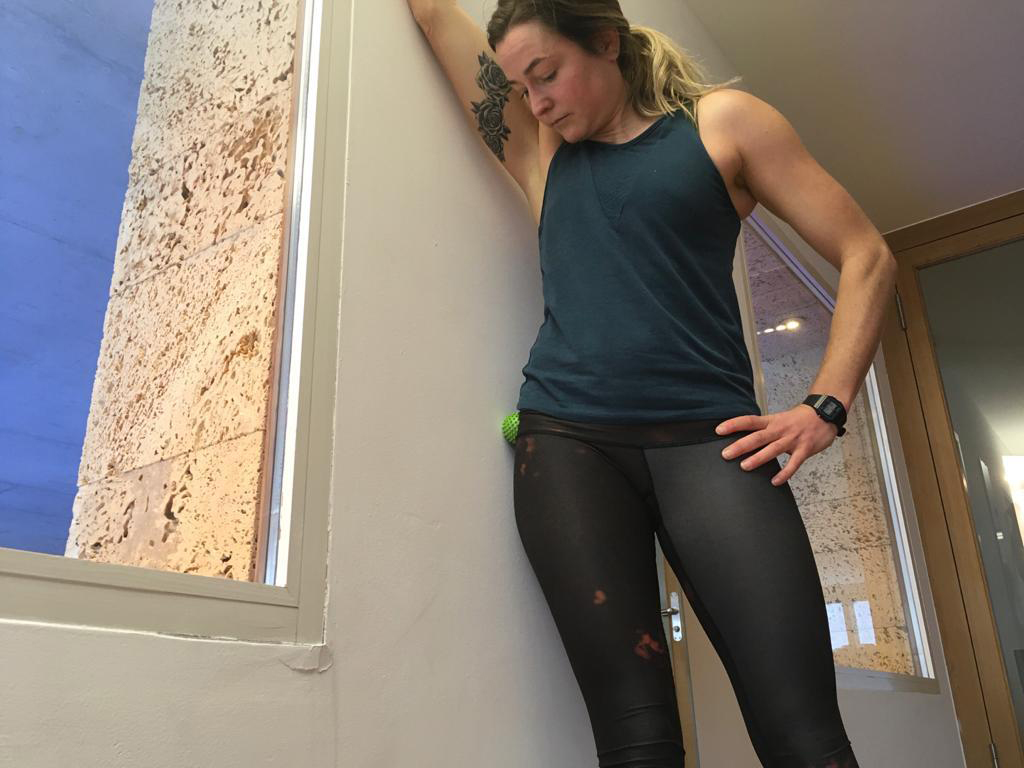
2) Foam Roller Release
So not the most comfortable thing to try and release, but try and ‘roll’ up and down the whole length of the outer leg (top of hip all the way to the knee).
Try and keep your core engaged and reap the extra benefit of getting your core going too!
If you really struggle with upper body strength, you can place the roller against the wall (at different heights along your outer leg) – then lean all your body weight into it.
Move the roller along the leg.
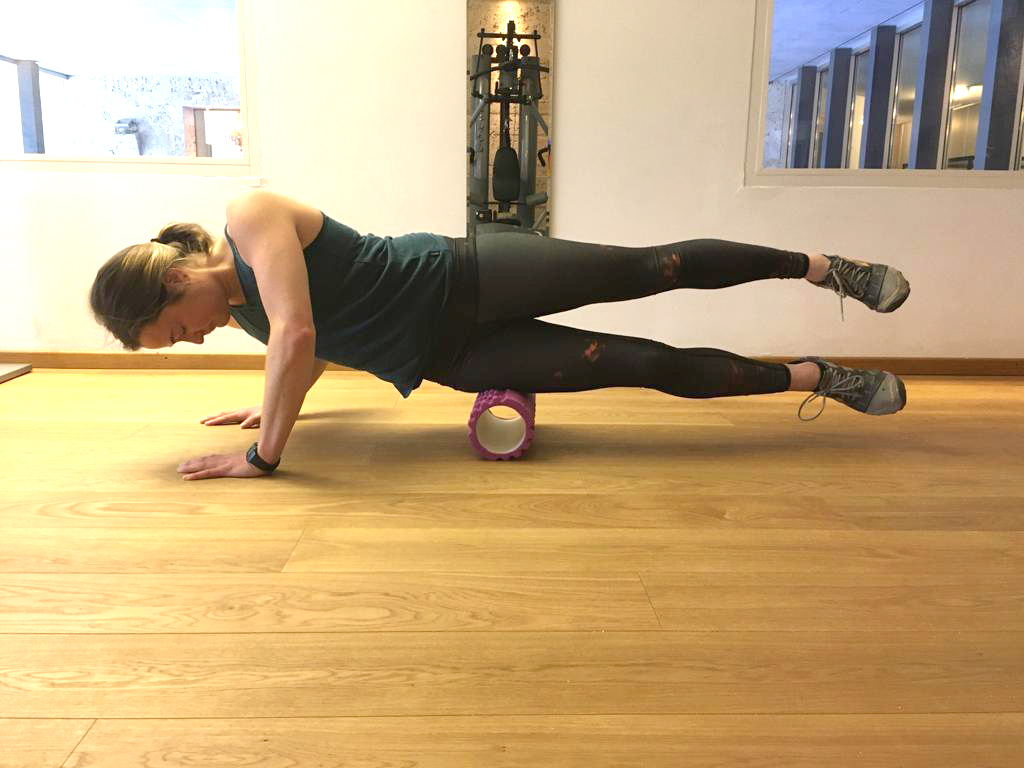
3) Glute Activation 1
If you have some theraband that is ideal, but if not you can still connect and focus on activating your gluts without.
Start either stood up or as I am here with a slight forward lean (but keeping spine neutral and core engaged).
Keep the static leg soft and aligned over your second and third toes.
Take the moving leg out sideways, and slightly behind.
Try to not let the toes turn out and open up – this gives your hip flexors more chance of firing when the aim is to get the gluteus medius working (i.e your pelvic stabiliser).
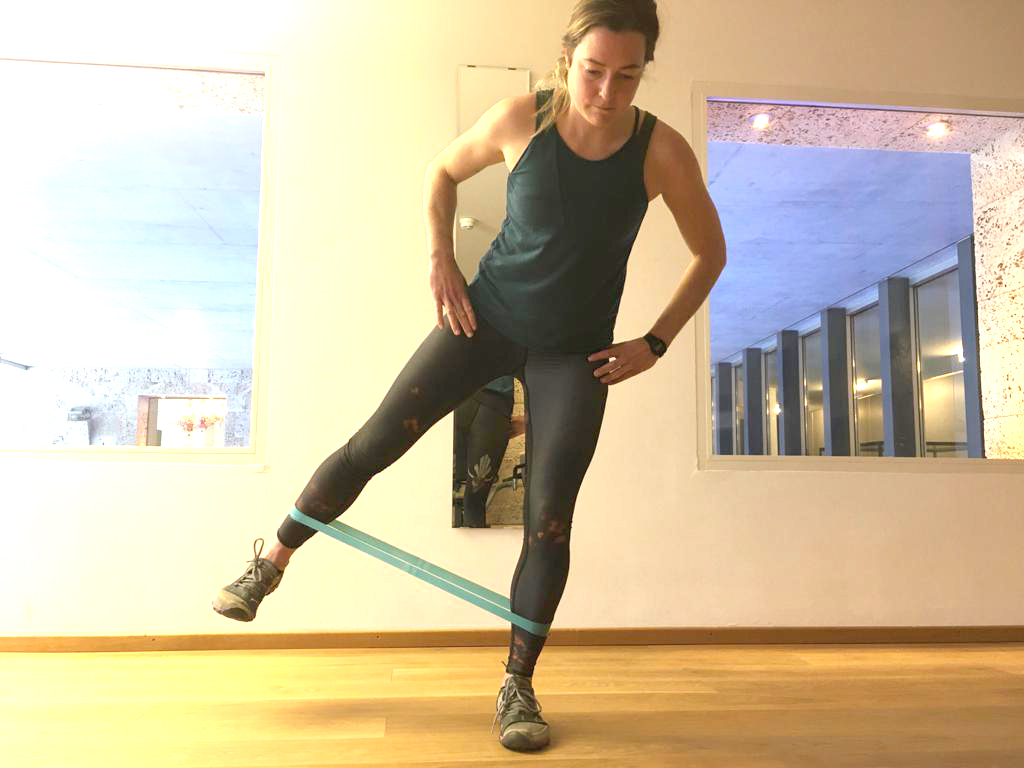
4) Glute Activation 2
Here we are trying to get the glut max firing, one of the main hip extensors which will help you propel forwards with power and efficiency in both touring and running.
Start again lined up, with a slight forward lean, but core engaged and spine neutral. Try not to let the pelvis twist, or allow the lower spine to give into extension, allowing the lower back muscles to over dominante the movement.
It also helps to keep the moving leg relatively straight, to not allow the hamstrings to kick in too much.
If you’re familiar with pilates this movement is a little bit like single leg kick.
To really make sure the gluts are the prime mover, think to do a mini ‘butt’ squeeze first before moving into extension.
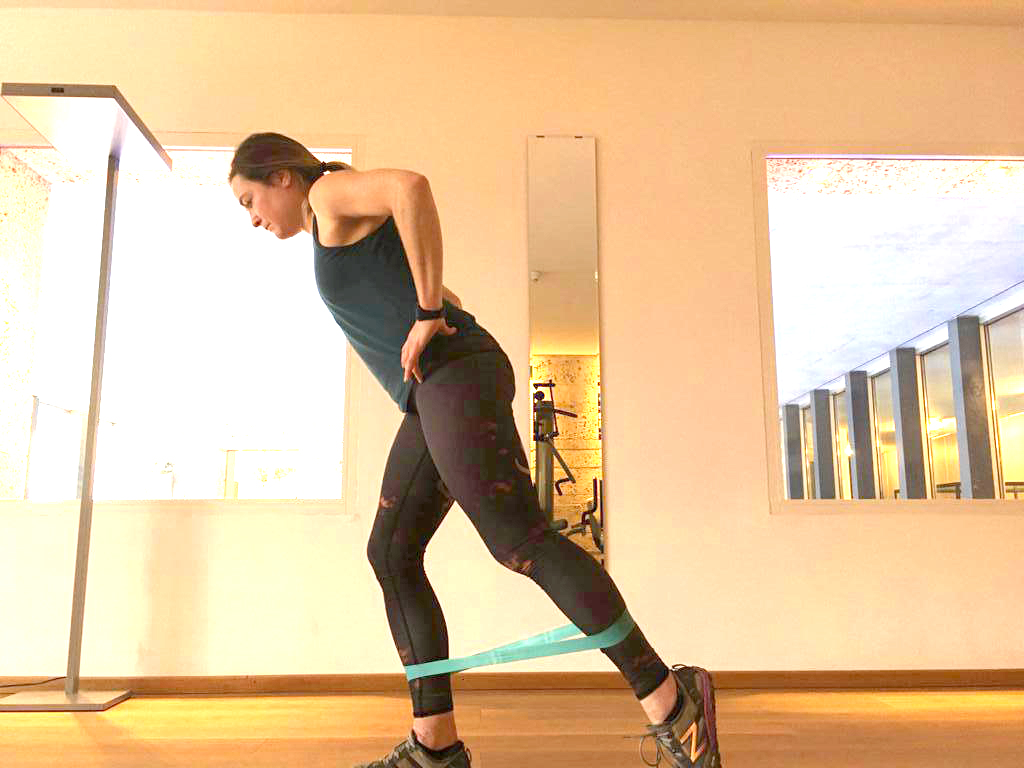
5a) Runners Reach
a): Try reaching forwards and down, keeping your static leg soft, but relatively straight. Watch the pelvis doesn’t open up and you keep your core switched on.
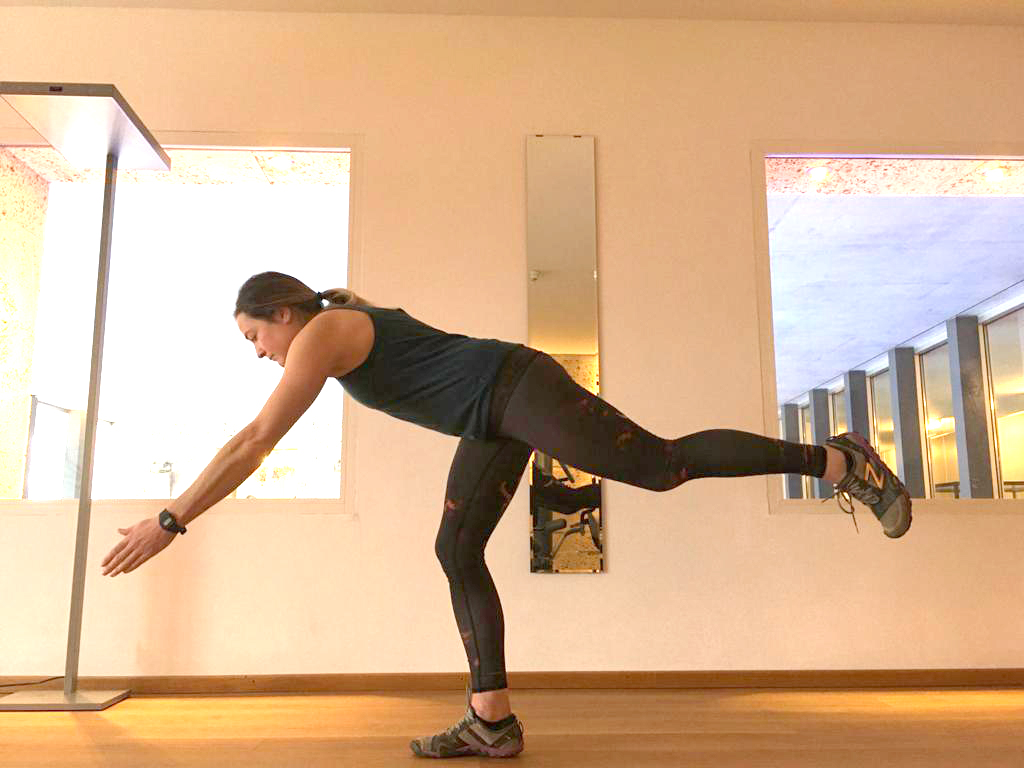
5b) Runners reach
b): from the position above, using your core bring your back leg up in front to a balanced single leg position. Try to use opposite arm to leg, to mimic a running type action that your brain is familiar with. If you really want to challenge yourself and get your balance system going, try with your eyes closed!!
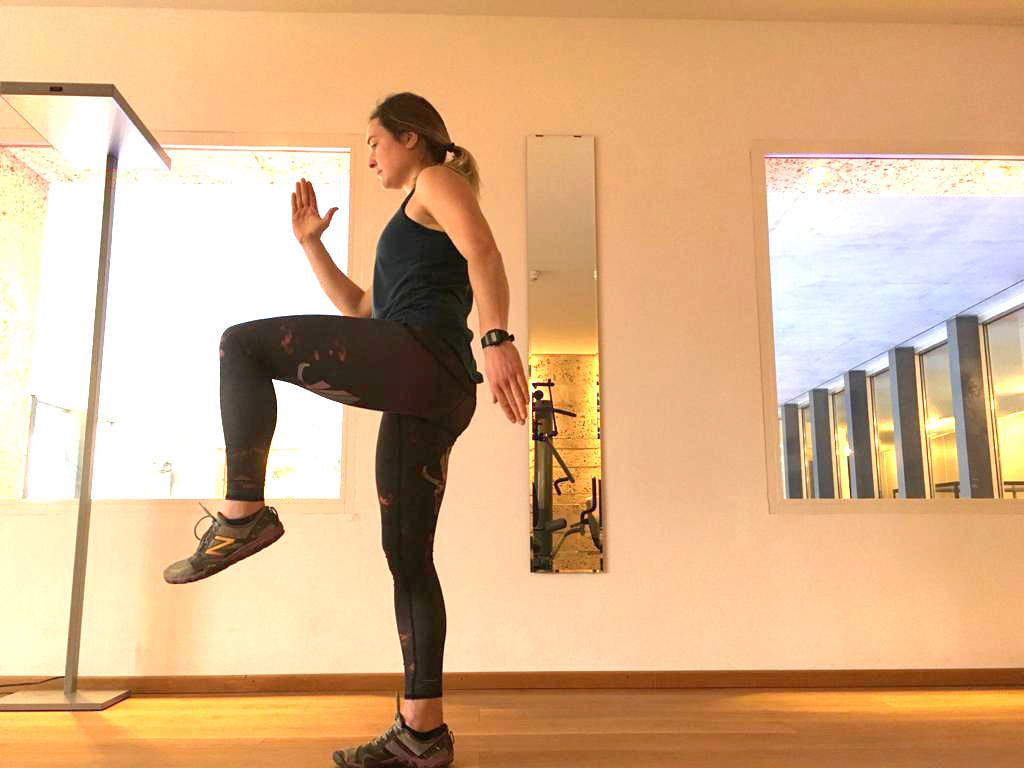
As mentioned above, these exercises are in no way prescriptive and ‘one size fits all’. But they are a good starting point. The release work is also very good post run or tour – try working a little longer and combining with some stretches. Have an experiment with the massage ball.
For me personally I get pretty tight in my upper back and shoulders from where I previously broke my back, and where carrying a heavy ABS bag leaves me quite sore.
So I try and get the massage ball into those spots.
Have fun, stay fit and healthy 🙂
And of course get in touch if you are looking for more specific advice.
Ski Touring Is The New Cool!
In recent seasons ski touring has become more and more popular.
What exactly is this ‘ski touring’ thing I keep hearing about? Is it for me? Well, you certainly don’t need to be an amazing expert skier, and you don’t even need to be that fit…
Let’s go back – a long way – to the origins of what we now call skiing. From relics and cave paintings we are fairly sure that skiing started as a way of transporting people around snowy mountains, going from village to village, or for hunting etc.
Walking in deep snow is tricky, walking on skis keeps you up on the snow and allowed people to transport themselves more easily.
Fast forward to modern skiing, we have chairlifts to get us up the hill, and modern skis with waxed bases that allow us to slide down the hill with grace and ease.
But what if you want to get access places where the chairlifts don’t go? You can walk!. There is an issue; if a ski slides down the hill, then when you try to walk up the hill the skis will keep sliding down the hill (backwards).
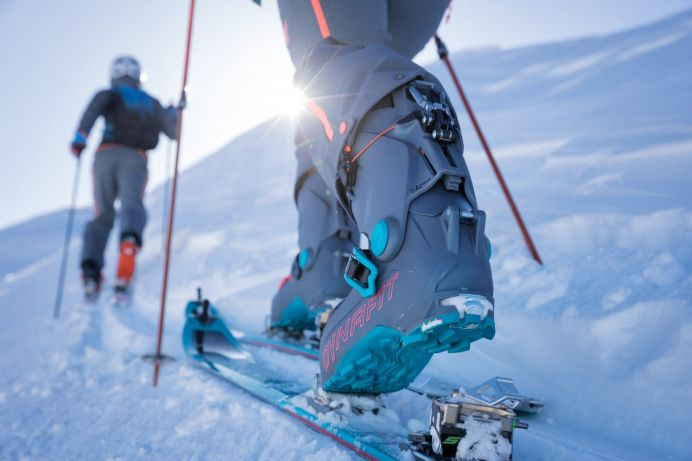
In modern skiing there has been a system to get around this issue for many years, it is called Ski Touring, or Ski Randonee, or Skin-ing.
Skin-ing was a name that came from when seal skins (modern-day “skins” are not made from seals!) were cut into the shape of the skis and tethered to the bottom of the skis. The knapp of the skin was put so that the hair ends were pointing backwards. So with skins on their skis, the skier can slide the ski forward, but it won’t slide backwards, this allows them to walk up gentle hills without sliding backwards while still being supported on top of the snow. Then when the skier gets to the top of where they wanted to go, the skins can be removed and the skier is able to ski down with their regular skis.
To make the action of walking easier, bindings were designed that would keep your heel locked down when you were skiing downhill but were able to be released at the heal for when you were walking uphill – the touring binding was born.
So to go ski touring all you needed was skis with touring bindings and skins. But as you can imagine walking uphill with your normal heavy ski boots on could be quite a drag. So ski touring boots have been developed, designed to be lightweight and suitable for walking.
All these things have been around in a recognisable modern format since the 1960’s and 70’s.
So why has it become the new cool?
Technology!!!
Fat skis – powder skis have opened up brave new worlds for all skiers to access off piste skiing.
New Pin and Frame touring bindings systems that are strong and very light.
Touring boots that allow freedom to walk up, and performance when skiing down.
Ski Touring was always about getting away from the crowded pistes and adventuring into new terrain. But there was always a play-off between light and practical equipment to walk up the hill, and having good strong performance equipment to enjoy the run back down again.
In recent years technology has improved in such a way that now skiers have skis, bindings and boots that allow the walk up to be efficient and the ski back down to be performance.
If you are a skier that wants to ski off piste then you will know the enjoyable feelings of skiing untouched powder. But as we know it all gets “skied out” after a snowfall.
Every bit of powder that can be accessed from the chair lift will get skied! But you know there is more, you can see it, but it is always in those harder to get to places.
This is when ski touring can be the solution, you can go on an adventure, get away from the madding crowds and enjoy those fresh lines.
A little bit of walking and new powder fields can be yours.
If you are keen to try out Ski Touring then TDCski run Introduction To Touring clinics – find out more…
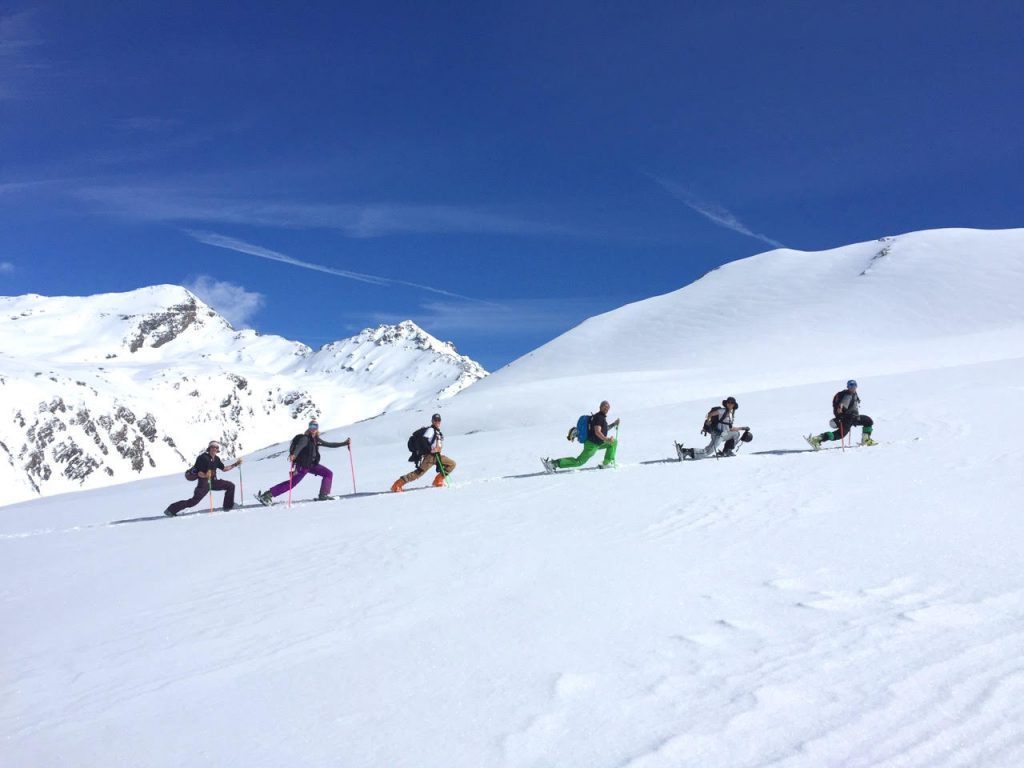
Reduce Falling Over & Risk Of Knee Injuries While Skiing & Snowboarding
by Jo Pollard – jopollardphysio.com
Take a look at these 5 exercises and reasons why to add hamstring strengthening to your fitness programme
#ski fit #injury prevention #biomechanics #stronger #train smart
REASON 1: INJURY PREVENTION #ACL
Many of us (and rightly so) focus on exercises to our quads, as this is where we feel the burn when riding, especially in the pow right? While this is correct and it is important to train these muscles, it’s also important to exercise the counteracting muscles; the hamstrings. If our quads are too strong, or our hamstrings too weak, there is an imbalance. This combined with the fact that the hamy’s act like a brake system which means that if we fall, twist or land awkwardly, we are more likely to cause injury to our knee if the hamstrings can’t counteract this quad contraction or adequately play its stability role. This is of huge importance in avoiding an ACL injury and important to include in any programme post *ACL surgery/injury (*always seek physio advice for a specific plan)
REASON 2: BE MORE DYNAMIC AND EFFICIENT.
Our hamstrings contribute to stability, shock absorption and better movement patterns. Connecting our hips and knee joints, they provide efficient load absorption and power to be transmitted in our sports. Our hamstrings and gluts work together to provide strength and explosive movements, but also support what is known as our posterior chain. In skiing and snowboarding, this would relate to us being able to maintain good posture, resist falling over and keeping upright in bumpy or unpredictable terrain.
REASON 3: WANT TO AVOID FALLING OVER AS MUCH?
Our hamstrings often work eccentrically, meaning they are lengthening whilst also contracting.
This is especially important whilst running or kicking, or in the skiing
environment to help control our movements, especially if we feel we are going over the ‘handlebars’ – are hamstrings act like decelerators.
REASON 4: BE BALANCED – STRENGTH THROUGH RANGE
As well as being strong, our hamstrings need good length in them to optimally provide the qualities discussed. If the hamstrings are tight, they can pull on your pelvis and cause biomechanical imbalances. You are at risk of this if you ski or snowboard for long periods, as you are nearly always working with a bent knee and therefore at risk of the hamstrings tightening and potentially straining.
REASON 5: BIOMECHANICS
Sorry ladies but this is aimed at us! Women are more likely to have valgus collapse in their knees -meaning our physiology generally means our knee drops into adduction and internal rotation more easily (i.e. collapses in). While skiing or snowboarding with our knees in a bent position our inside knee ligament (MCL) is not so effective at supporting our knees – our hamstrings (as well as other muscles of the knee), play a huge support and protection role to the knee ligaments.
There are of course many exercises, but give these 5 a go to get your hamstrings and glutes firing up…..
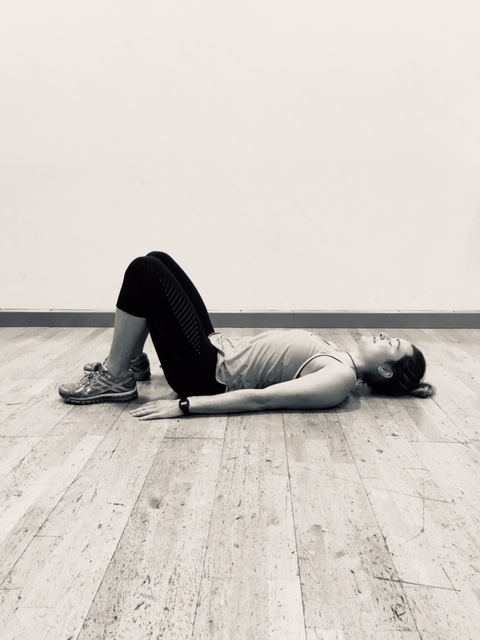
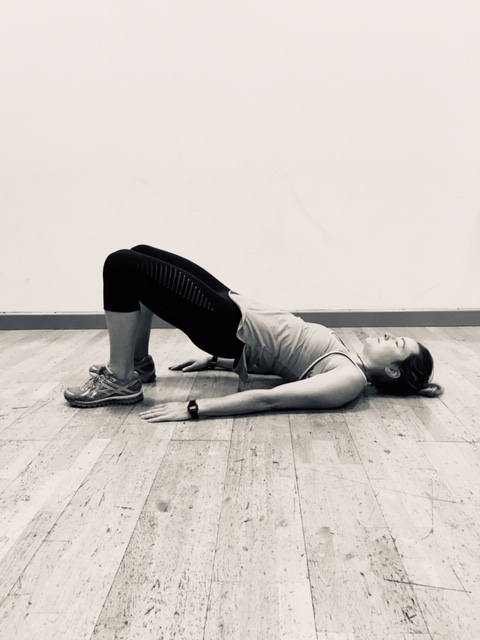
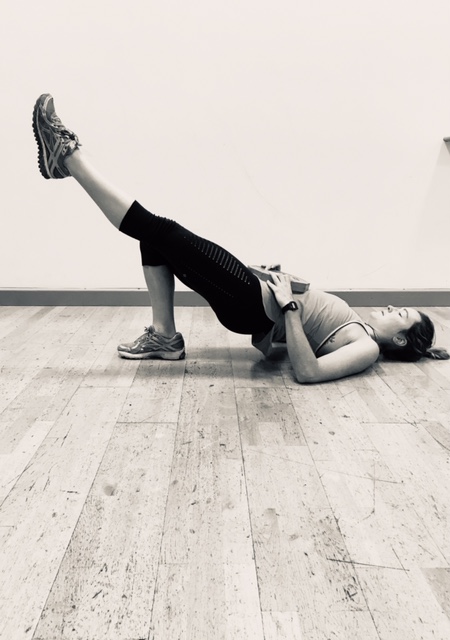
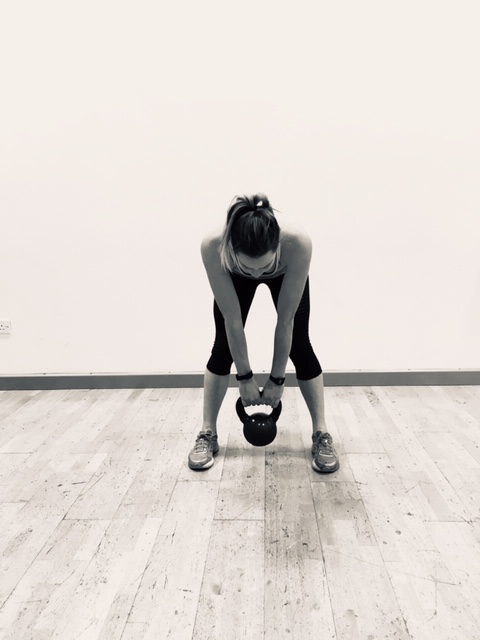
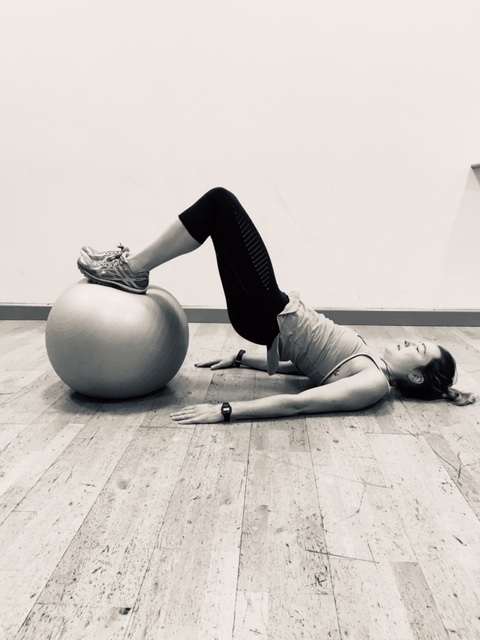
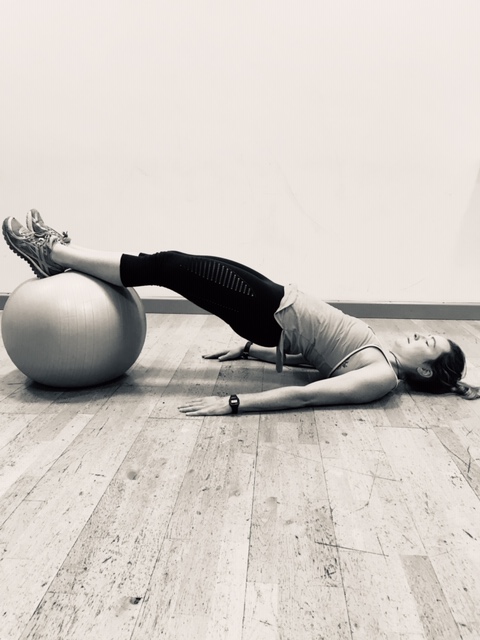
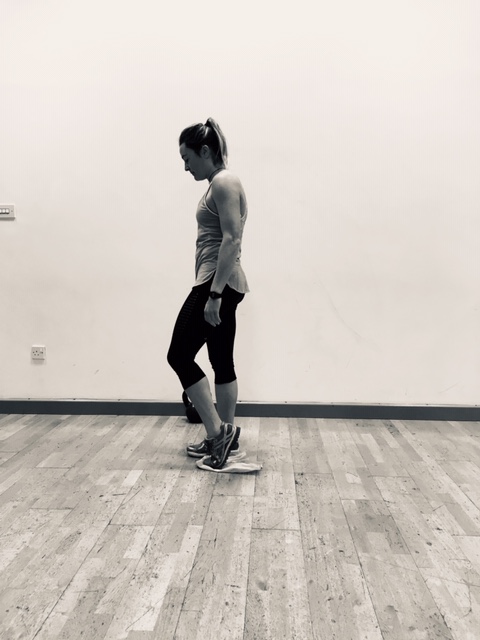


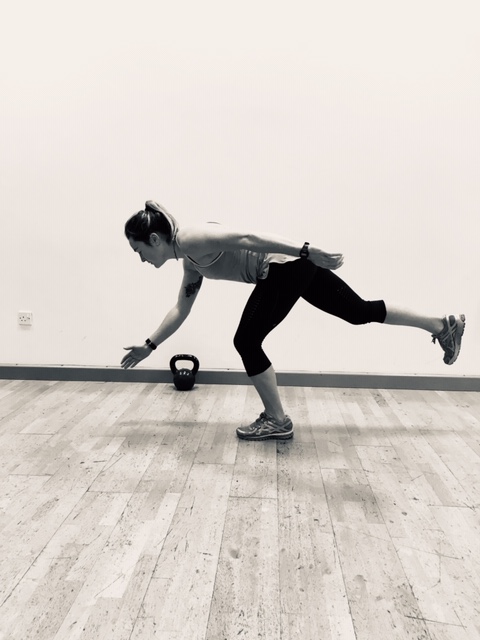

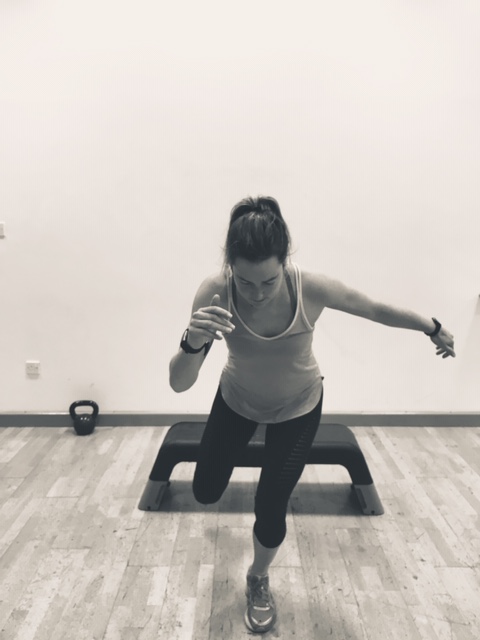
For power this exercise it can be progressed by landing and exploding straight up into a single leg hop
Start with low reps and sets i.e 4-6 reps x 3 sets, and build up as you gain strength and confidence. As with any exercise it is important to fully warm up and seek further advice if you are unsure of any of the exercises. Feel free to get in touch for advice and more ways you can prepare yourself for your sport or post injury programmes
Coach’s Corner Nov 2019
Looking At Dealing With Poor Visibility
Head for the trees
In poor visibility, the shadows and definition from tree-lined pistes break up the whiteness and enhance visibility. Armed with this knowledge, you need not miss a day’s skiing. In fact, bad weather days can be some of the best, as you’ll often have the slopes to yourself.
Keep it real
Have realistic expectations about skiing in these conditions. Much can be gained from working on specific skills that are ordinarily neglected. You will reap the rewards on the next sunny day. Slow down and go for quality. Focus on rhythm, feeling your feet, and planting your poles. In very poor visibility, it is vital to look ahead and not down.
Take control
Nobody enjoys poor visibility, but you cannot control the weather. Focus on the controllables. Your route is up to you and even in a total whiteout there are ways to navigate. Listen for the lifts to help orientate yourself, head to the side of the piste and follow the numbered piste markers, counting down to number 1. Making these types of choices and decisions will help remind you that you are in control of the situation.
Action
Head for the trees
Realistic expectations
Controllables
Coach’s Corner Sept 2019
Throughout the season we will be sharing top tips in Coach’s Corner that will help with some of the common issues skiers face on the mountains. Here is a taste of the topics still to come:
- Skiing in poor visibility
- Negotiating narrow paths
- Coping on crowded runs
This article will look at dealing with the dreaded ice.
Who needs grip?
The belief that you should try to grip on ice is a widely held misconception. Trying to grip will usually result in you skidding, whether you mean to or not. Deliberately skidding is what you must do. Learn to love the ice, by choosing to skid, this way you can control your speed and direction. Remember, skidding is the correct technique for skiing on ice, so take control and choose to skid.
Loosen up
Tensing the upper body often causes you to lean back up the hill unbalancing you in the process. To stay loose and balanced, consciously relax how tightly you grip your poles. It is likely that you grip them very tightly when you encounter ice. Consciously loosen your grip and you will feel your entire upper body relax; maintain this as you tackle the icy sections.
Search and conquer
To improve, you need to seek out the ice and practice (where you are comfortable to do so). Although reading the terrain is something that comes with experience, everyone can stop and assess what lies ahead. Focus on what you can control. The route you take is your choice, so look for the ice and enjoy.
Actions
- Choose to skid
- Loosen your grip
- Go ice hunting!
Jan 27th 2017 Snow Conditions Val d’Isere Tignes
This week Clare is telling us all about the current snow conditions in Val d’Isere and Tignes…
Conditions On Piste Are Fantastic…Again
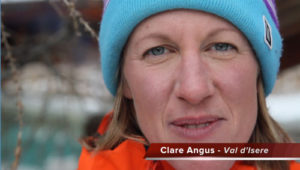
Dustings of snow, Off Piste is good, can be wind effected, some good snow in the gullys.
Things are looking good for February.
Watch a honest and open summary of the current snow conditions.
If you are keen to see this seasons reports then be sure to watch out for them on Facebook, Twitter, YouTube and Vimeo.
Keep Watching!!!
TDCski The Development Centre – Ski Lessons Val d’Isere – Ski Lessons Tignes
Want To Know What The Snow Conditions Are Like?
In recent weeks there seems to have been quite a lot of internet discussion about what the snow conditions in Europe and the Alps have been like.
Snow Conditions Val d’Isere and Tignes
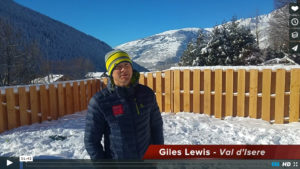
The Alps cover a big area and there are lots of different weather patterns that will bring different amounts of snow to different regions.
At TDCski The Development Centre – we have been making weekly videos that will give you an honest opinion about what the snow is like in Val d’Isere and Tignes.
So if you are coming to Val d’Isere or Tignes, or maybe you are just thinking about which ski resort you should go to, then have a look at our weekly snow reports.
Last Seasons Wrap Up
We are honest and try to maybe bring a smile to everyone’s faces; just a little!
Here is an end of season wrap up (out-takes) of all of the snow reports from last season (2015/2016)
If you are keen to see this seasons reports then be sure to watch out for them on Facebook, Twitter, YouTube and Vimeo.
Watch this space!!!
TDCski The Development Centre – Ski Lessons Val d’Isere – Ski Lessons Tignes
Surviving Winter
OK, “surviving” might be a bit strong, but keeping warm on the slopes in the middle of winter can be a challenge. As well as the main clothing like jackets and trousers, there are other things that can make a big difference for people who struggle to stay warm:
Wear Thermals
Extremities get cold first. It is what the body does to protect itself from cold. So, if your hands or feet get cold, it might not be down to the gloves or boots, but because you haven’t got enough layers on. Wear good thermals, and if your hands and feet are still cold, wear another jumper.
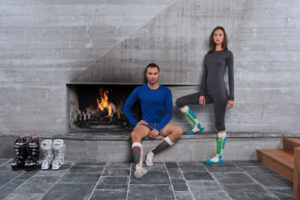
Helmet and Hat
Helmets can expose the neck to cold mountain air. Neck warmers, thin balaclavas or multipurpose tubes keep you toasty warm. Like scarves, but better.
Get your feet out
Particularly for skiers: if your feet have been cold and numb for more than an hour, you need to warm them up. Get inside, take off the boots and get the feet warm again. This will allow you to ski again afterwards, rather than developing serious cold injuries.

Dry your boots
Damp or wet boots are bad news. You need to dry your boots overnight, so if the hotel or apartment doesn’t have specific boot heaters, you need to make your own arrangements. Portable boot dryers work really well and are easier than balancing boots on radiators.
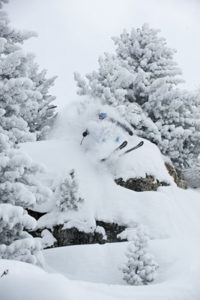
Giles Lewis is an ambassador for Dynastar skis and Lange boots. He is a ski Instructor with the development centre, who operate in val d’isere Tignes and the Three Valleys, France. He is a trainer and examiner of Instructors for BASI and a member of the British Demo team.
#tdcski #basi #valdisere #dynastar #lange
